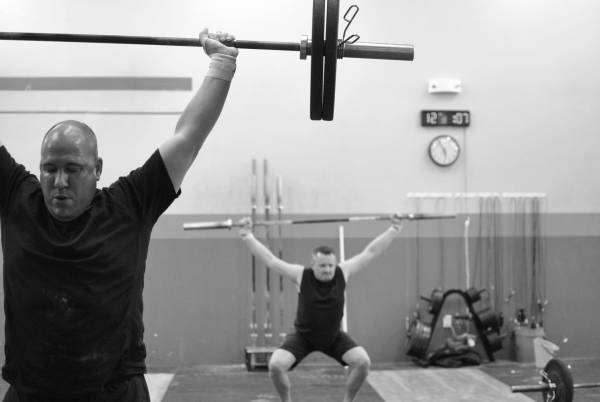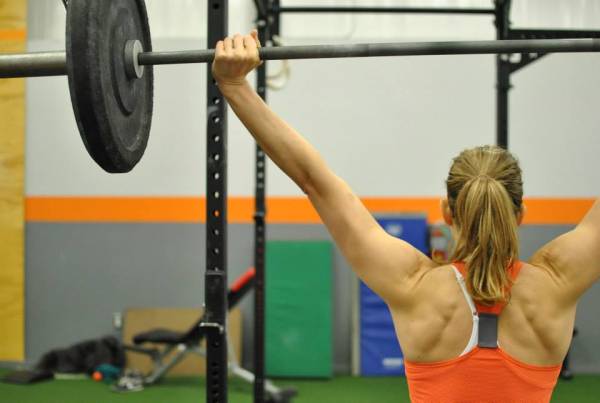Your warm up is an important part of your workout. We all know this, hopefully. But it is particularly important when it comes to being ready to make a complex lift with limit poundages all the while preventing injury.
First, I’m going to tell you how the warm up should go. And then, I’m going to discuss all the ways it can go horribly wrong.
The Proper Way to Warm Up
The purpose of your warm up is to raise your body temperature (especially that of the muscles) in order to prime the body for lifting. The warm-up period should prepare all the body’s relevant systems (cardiovascular, respiratory, nervous, and muscular-skeletal).
You must do this gradually, increasing the demand on those systems until you are ready to add some weight to the bar. You will start with a low intensity activity, perhaps walking or light jogging. Just enough to get the blood flowing. This may be supplemented by the wearing of sweats. This will raise the body temperature somewhat without using a lot of energy, and that is what you want.
The next step requires more physical activity. With lifters, this will be a stretching of all major muscles, tendons, and ligaments in the body. This should not be done randomly. Start at the extremities and work towards the core areas, the smaller joints to the large ones. This ensures that the required amount of flexibility is achieved before any serious lifting occurs. When your stretching routine is complete you should be warm and loose.
The next step is to practice your motor pathways. This is just a fancy coaching term for broomstick lifting. Most routines have the classical lifts opening the day’s list of exercises. You are sharpest at the start of a workout, so you want to do your technique work then. Take the broomstick and start doing snatches. Make sure you are indeed as loose as you should be in the lift. The advantage to doing this is that the body temperature will be more effectively increased in the specific body parts you will be using.
When you are satisfied you can start using only the bar and then add weight until you get to your work sets. When done properly, a warm up will reduce the likelihood of an injury while ensuring your technique is as correct as possible. A good warm up also ensures that the lactic acid build-up is kept to a minimum.

How the Warm Up Can Go Horribly Wrong
What I’m now going to talk about is how this warm up can go wrong, despite following all of the above suggestions. To address this, we have to think back to the reason you warm up – to raise the body temperature.
Ambient temperature can influence your personal body temperature significantly. A warm room or atmosphere will certainly help you raise your body temp. In no time you will feel that you are ready for the big plates. After all, you are sweating already. What can go wrong?
Well, here is what you have to watch out for. I remember the 1979 Pan American Games in San Juan, Puerto Rico. They were held in mid-summer, it was very hot, and it was even more humid than it was hot. Most of our Canadian team was from eastern Canada where humidity was high, but nothing like San Juan. Ditto the heat. Everyone thought that their warm ups were going great. The heat gave everyone a false sense of readiness.
Sure, their body temps were high enough (probably too high), but they soon found that their flexibility was not keeping up. They were warm, but they were surprised to be still a bit tight when taking their first attempts. Pulled muscle injuries were a real possibility. They then learned they had to do more stretching. An obvious prescription, but one with a problem. The extra stretching also required more energy expenditure in the extreme heat. So they all had to re-plan their warm ups.
There was one bright spot though. With all that sweating nobody had any problem making weight. The opposite problem ensued, that of maintaining weight. San Juan seemed like one giant steam room. On the positive side, all could indulge themselves on the great food in the games village.
Warm Up Considerations for Cold Climates
While it took some extreme climate circumstances to teach this lesson it should not have been so difficult. Our Canadian lifters actually have the same body-warming problems only in reverse.
Most Canadian lifters and many American ones train through long winters. Gyms may not be heated 24 hours a day. Some are only heated when someone trains in that basement and turns up the heat. In addition, the lifter’s body is still cold from being outside as he or she enters the gym. The joints are also tighter since muscles naturally tighten as a cold-fighting response. Technique deteriorates if the warm up is not sufficient. Lifters in these situations soon learn that warm ups must take longer in order to accomplish the same objectives.
It is easy to figure this out when dealing with low ambient temperatures. It is harder when hotter, since then you will be conned into thinking you are ready when you are not.

Your Warm Up Needs Can Change
You should also be aware of acclimatization with regard to all of this. I remember well my trip to Germany in 1974. There were five of us training, one other being Rob Macklem, now probably the world’s premiere weightlifting photographer. But back then we were just young lifters from the fairly dry Canadian prairies.
We were in Germany for a whole month, training almost daily. The German lifters were amused by how much we sweated in our first week. We were washing our sweats daily while the German lifters had to work hard to start glowing. But as the weeks went by, we got a bit more accustomed to the climate. We reduced our washing to every other day at least.
It was also important to take the lifter’s body mass index into the body heat monitoring. Me being a 95kg lifter, I still sweated well. But our too-skinny 67.5 lifter sweated very little.
The Take-Away
The bottom line in all of this is that warm ups have to be coordinated not only with body and ambient temperatures but most importantly with your degree of stretching and flexibility. Your desired body temperature may be easy or hard to get to depending on ambient temperature. But reaching that temperature will do you little good if your muscles are not loose and your motor pathways are awkward due to insufficient warm-up procedures.
Don’t let the thermometer fool you.
Photos courtesy of CrossFit Impulse.






